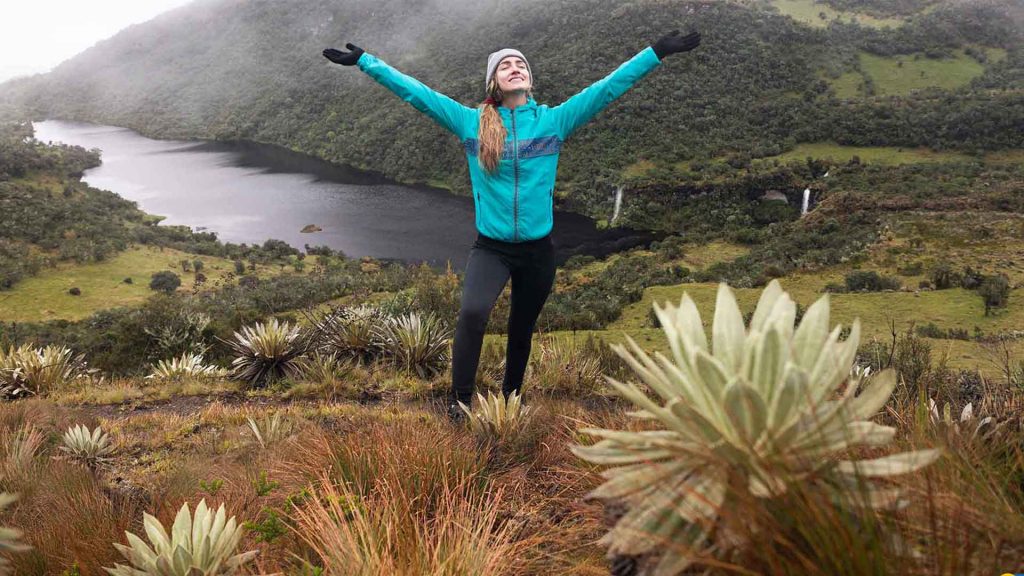
Escape into Colombia’s Stunning Natural World
Did you know that Colombia is classed as one of the world’s “megadiverse” countries and holds 10% of the planet’s plant life?
With 314 different ecosystems from the Andes mountain range to the Amazonian rainforest, the country is home to an incredibly diverse range of birds, animals, and plants. Conservation exist throughout the country to protect vulnerable species and maintain Colombia’s natural beauty and essential green spaces.
The country’s significant conservation efforts are already being recognized in local communities – and around the world. Colombia currently has consecutive wins in the Global Big Day – an international biodiversity initiative by eBird – in which people track the species of bird near them and upload the results to a database. It continues to lead the pack by hundreds of species – currently at 1453.
A commitment to preserving the natural world has been created in the form of a Sustainable Tourism Policy. As one of the few countries around the world to have created this, nature-loving travelers can visit Colombia knowing that their impact is being carefully managed.
Get to know Colombia’s wild side with this carefully curated list of some of the key areas to visit.
Go off-road at Chingaza National Natural Park
If you’re staying in Bogota, Colombia’s capital city, Chingaza National Natural Park is a great way to escape the metropolis and experience the great outdoors.
The park, which is four hours east of the city, is a protected area, home to 383 different plant types, including the frailejones. This sunflower relative is a fire-resistant hairy-leafed plant that has adapted to low temperatures and high humidity.
The park has six ecotourism trails, taking visitors on walks next to vast lakes, up mountains, and through forests. It’s worth spending time on additional research to ensure you find the right trail for your interests and ability.

To protect the area, visitor numbers to Chingaza National Nature Park are controlled, so make sure you apply for a slot at least 15 days before you want to visit. And by booking time with one of the official regional tour guides, you’ll be supporting the park’s ongoing conservation.
Hummingbirds and chocolate at the Reinita Cielo Azul Nature Reserve
This reserve was founded to protect migratory bird habitats, but it’s not the only thing you can look forward to when visiting this important conservation site.
In addition to the birds and animals, the park hosts a cacao farm that attracts plenty of feathered visitors, including over a dozen species of hummingbirds and wild quails. The park has recorded 270 different species, such as the endangered cerulean warbler, gorgeted wood-quail, Chestnut-bellied hummingbird, and mountain grackle.

The reserve also incorporates a 37-acre coffee farm. Visitors can learn about conservation-friendly coffee farming, including the cerulean warbler coffee sold to fund the reserve.
You can also walk along the historical Lengerke path, which was built in 1840 and spans 40 kilometers from San Vicente to Zapatoca.
The reserve is an easy 4-hour drive from Medellin.
And one final tip: the best time to see many animals and insects in their natural habitat is at night, so look out for after-hours access to the reserve.
See the Colombian national bird at Coconuco Reserve
Traveling to the Andes to see Colombia’s national bird, the Andean Condor, the largest flying bird in the world. Its habitat in the indigenous reserve of Coconuco is near Popayan city, in the department of Cauca (southwest of the capital). It’s also a simple 3.5-hour drive from Cali.
However, this beautiful creature is also a vulnerable species, according to the IUCN, due to habitat loss and hunters. Yet, decisive conservation efforts have seen the Andean condor bred in captivity and released back into the wild, with excellent results.

While visiting Coconuco, take a small hike up to the Agua Tibia Hot Springs, and enjoy the large naturally heated water. There’s plenty of space in the various different pools, giving visitors the chance to relax in peace.
This is just a brief snapshot of Colombia’s astounding natural beauty, but these experiences are unforgettable. And best of all, these visits will support local economies and help the ongoing conservation of Colombia’s unique ecosystems.
Explore more of Colombia:








